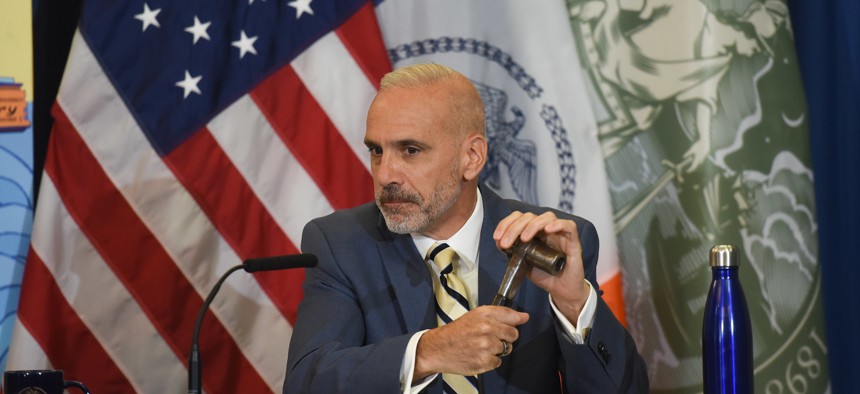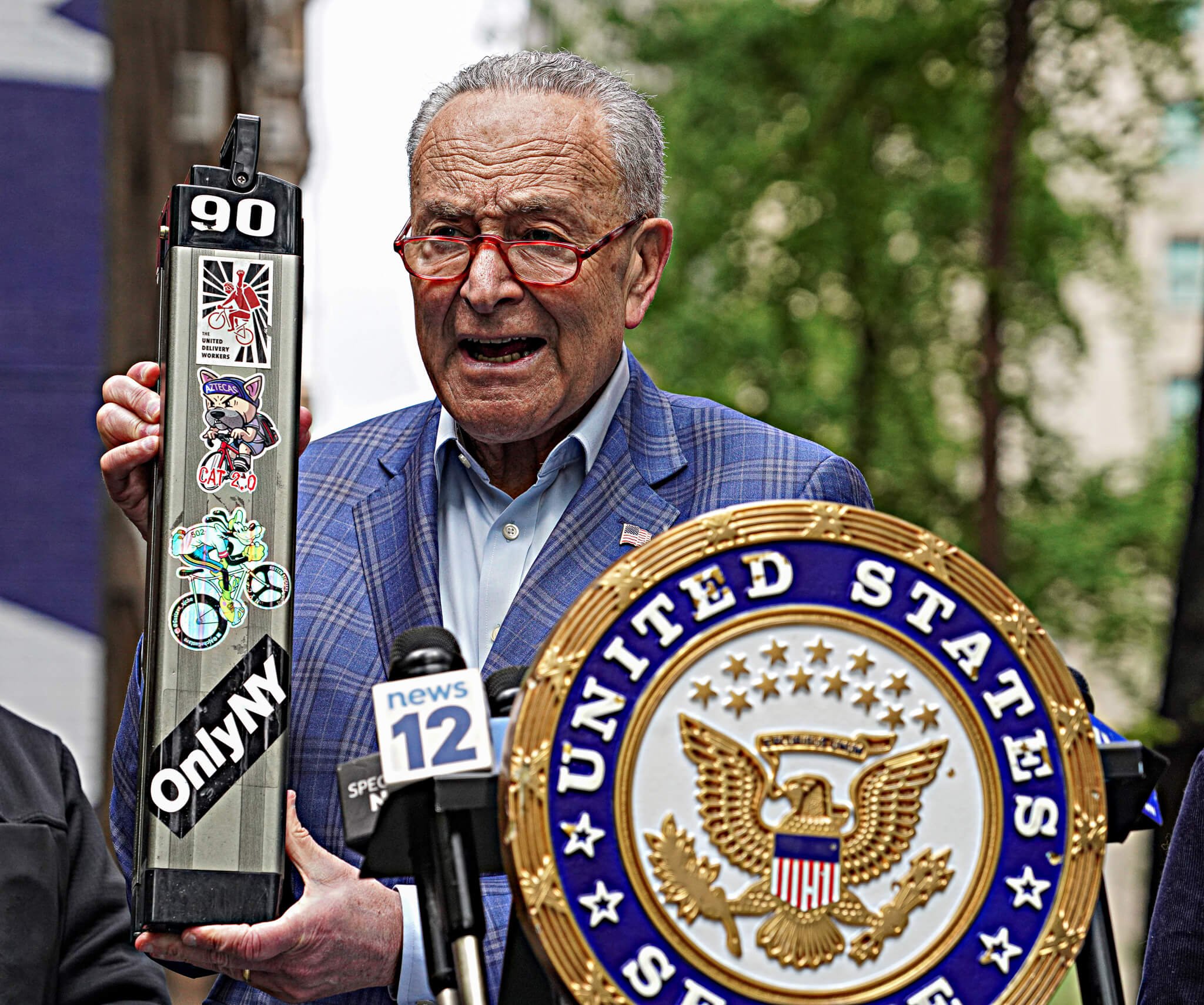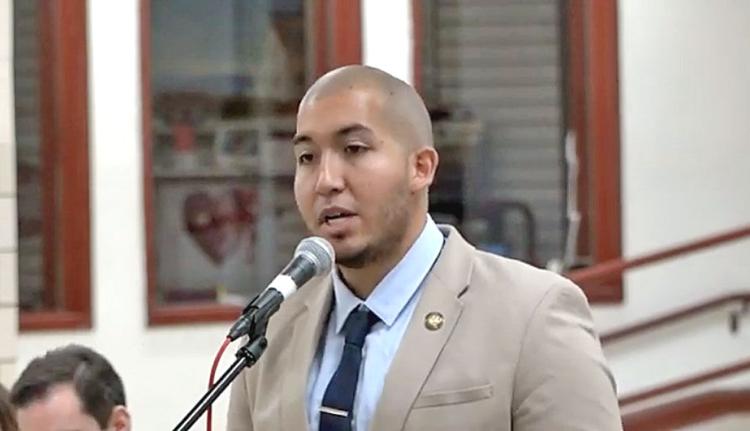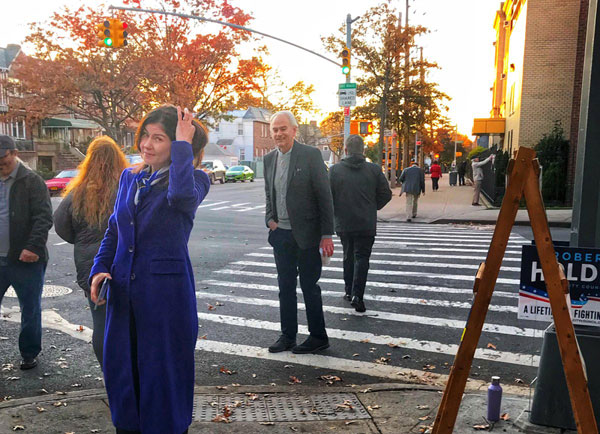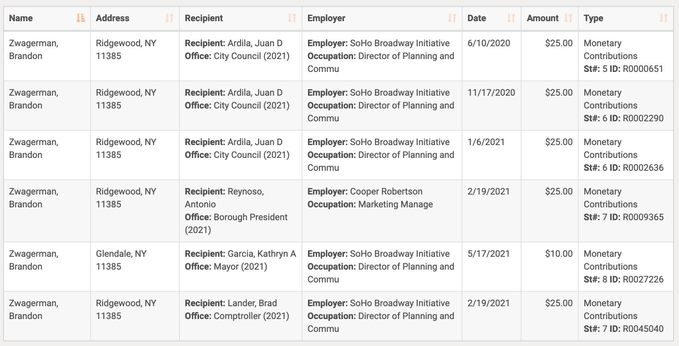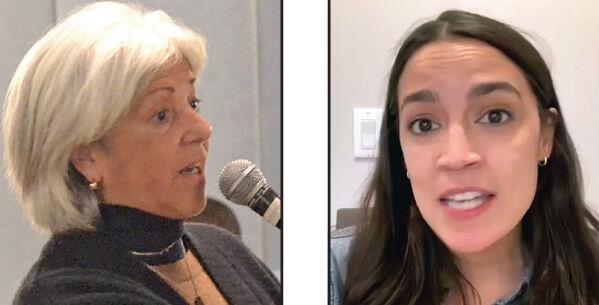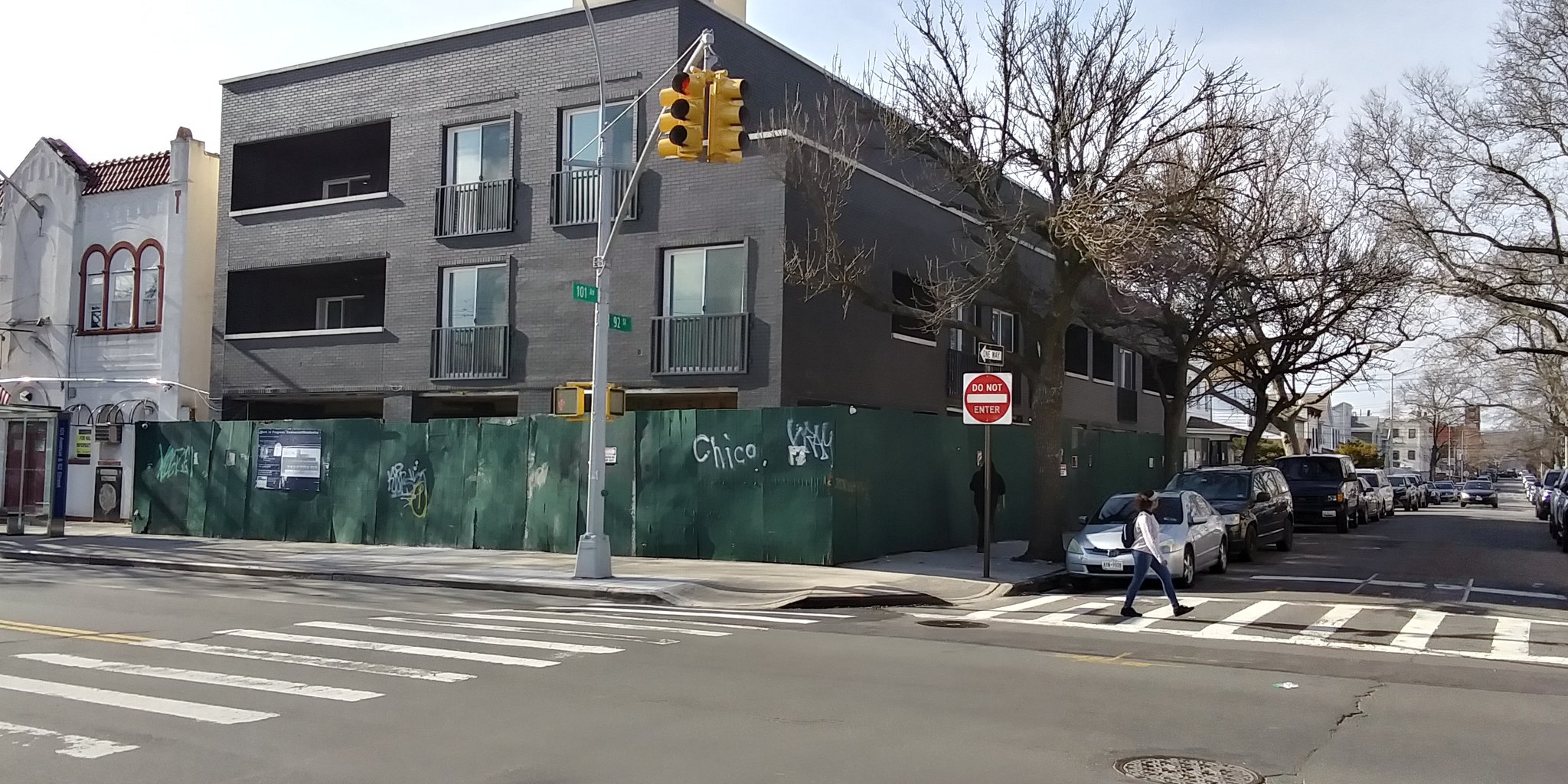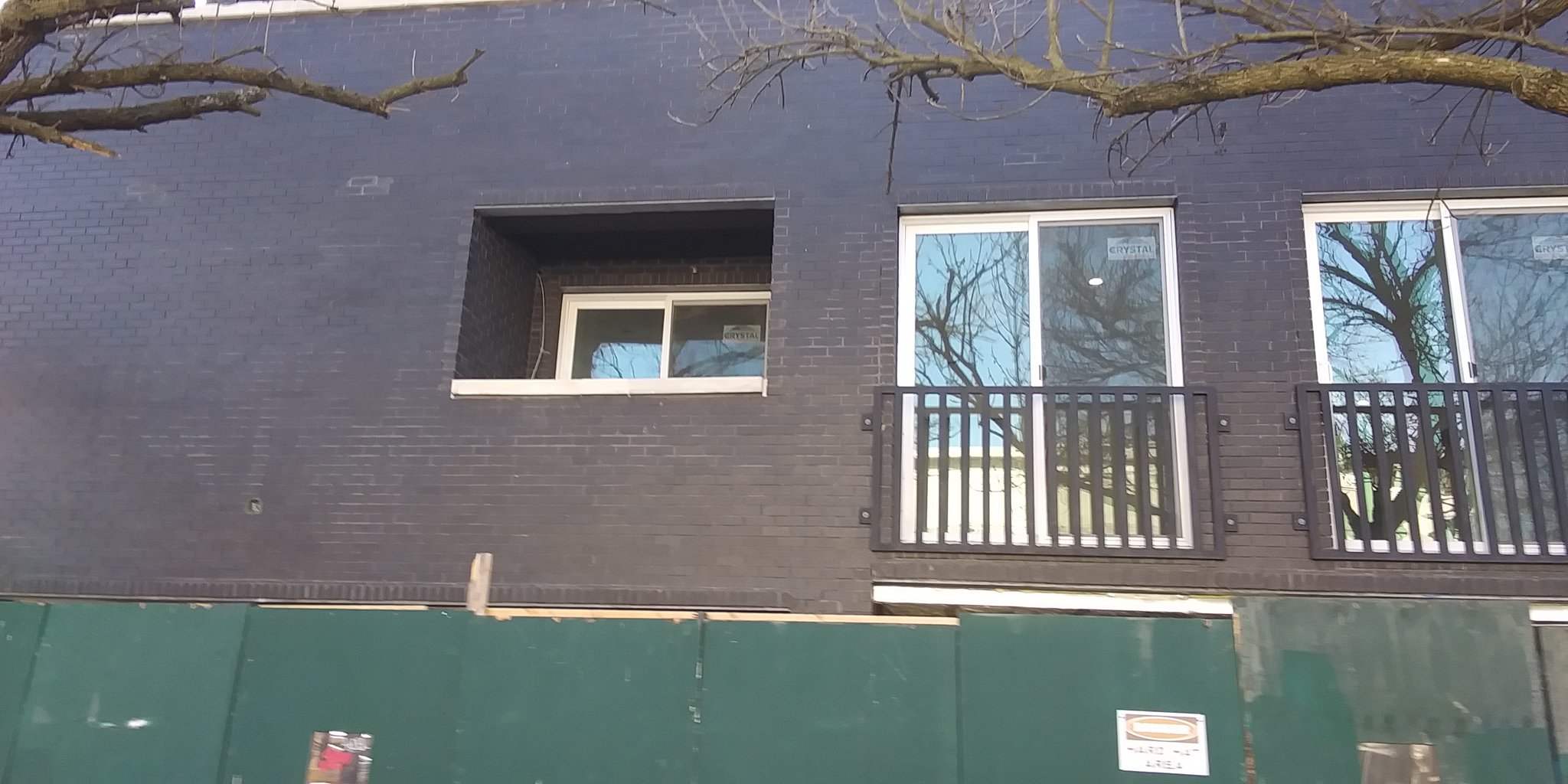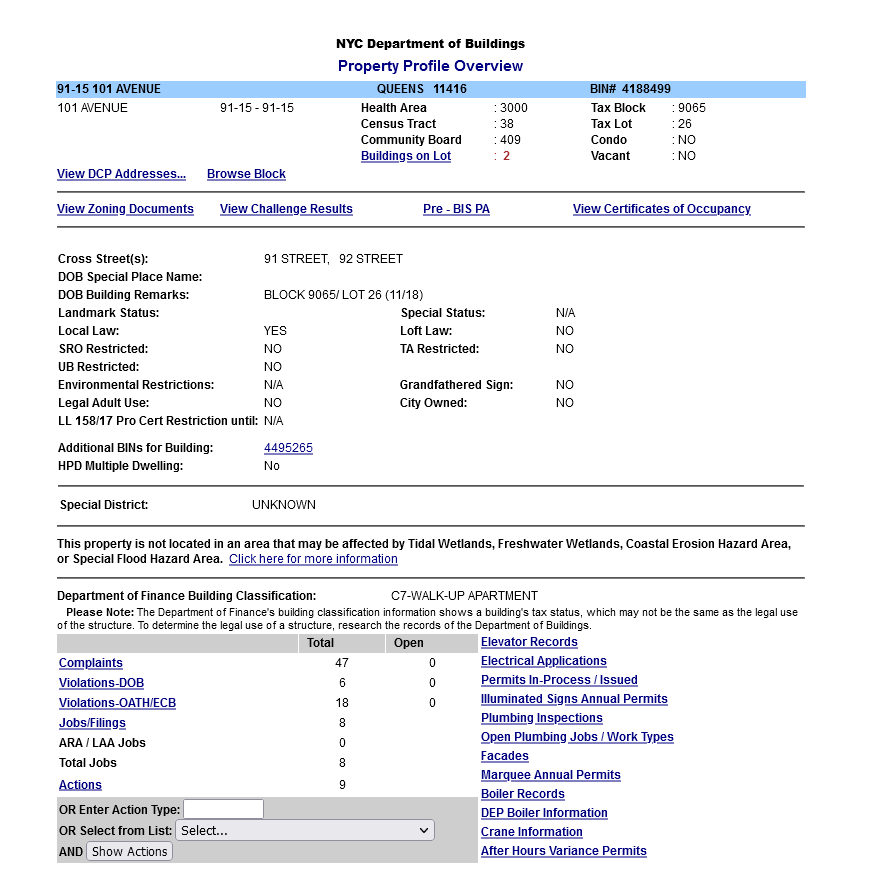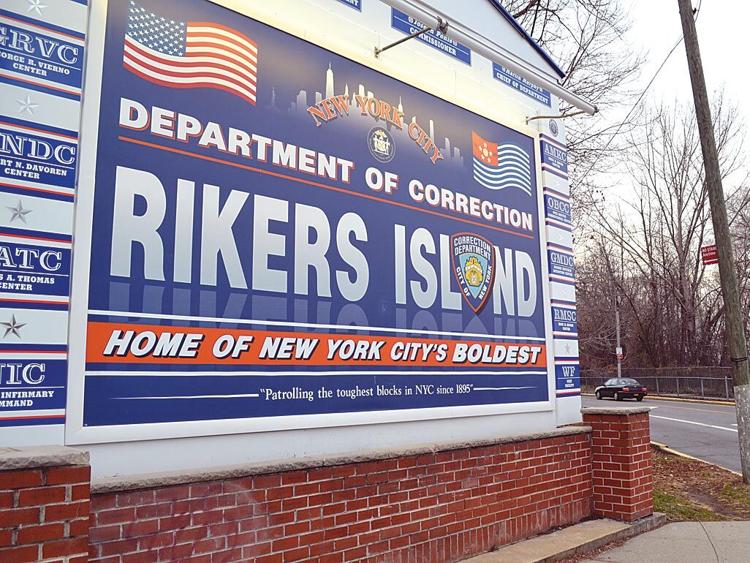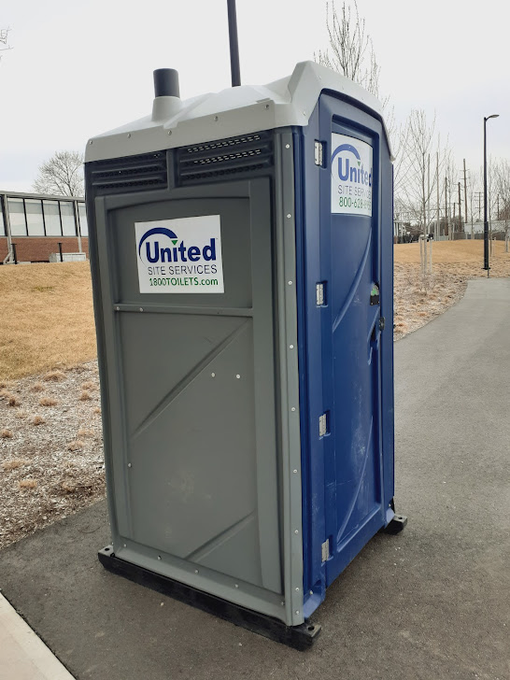
City & State
New York City Mayor Eric Adams unveiled a $106.7 billion budget proposal
for fiscal year 2024 on Wednesday – the largest in city history –
backing off, in small part, from some of the 4% agency cuts he’s
stressed as necessary. The proposal reflects few, if any, direct service
cuts, while adjusting spending estimates downward to hedge for future
“storm clouds ahead” like ongoing costs associated with the influx of
asylum-seekers, according to Adams. The proposal also includes a limited
slate of new spending proposals to, as Adams put it, improve the city’s
sustainability and resilience, strengthen mental health resources,
uplift “working people,” and bolster the college to workforce pipeline.
“We
had to make tough choices in this budget. We had to negotiate competing
needs. We realize that not everyone will be happy, but that is OK,”
Adams said from City Hall Wednesday afternoon.
Here are some of the top numbers you need to know to understand the city’s finances.
$106.7 billion – The size of the proposed expense budget, which is the largest ever. The total spending increased $4 billion dollars since the preliminary budget, which landed at $102.7 billion in January. The actual adopted budget
last June was $101 billion… but the city is now expecting to actually
spend $108.9 billion through the end of fiscal year 2023.
$4.2 billion, $6 billion, $7 billion
– The respective budget gaps in fiscal years 2025, 2026 and 2027. While
Adams presented a balanced budget for the current fiscal year and the
upcoming fiscal year 2024, hefty budget gaps remain in the outyear due
in part to increased pay for city workers under new labor contracts.
Fiscal watchdogs have warned that these budget gaps necessitate caution
in New York City’s current spending plans.
$1.6 billion
– The total savings achieved between fiscal years 2023 and 2024 through
the latest Program to Eliminate the Gap, according to City Hall. Adams
said that these cuts were accomplished without any layoffs or service
reductions – but with some savings achieved by taking vacant jobs off
the rolls, it’s unclear how the city will maintain previous levels of
service.
$4.3 billion – The
amount of money that the city anticipates spending on providing shelter,
food, clothing and other services to asylum-seekers through the end of
fiscal year 2024. This is a figure that Adams has pointed to repeatedly
in recent weeks as one of the big reasons that cuts are necessary. While
the city will likely receive $1 billion in aid from the state, and
predicts getting $600 million from the federal government, that total
would only cover under 40% of the city’s projected costs.
Over 57,000 people – The
latest estimate of how many asylum-seekers have arrived in New York
City in the past year. Some 35,000 are currently in city shelters, City
Hall says.
70,000 people – How many asylum-seekers City Hall anticipates will be in the city’s care by June 2024.
$16 billion –
The total anticipated cost of agreements with the city’s remaining
unionized workforces that have yet to strike deals, over the next five
years. The city has already reached agreements with District Council 37 and the Police Benevolent Association, which will likely set the economic framework for ongoing negotiations with the United Federation of Teachers and other labor groups.
26 days – How
late the state budget is past the April 1 deadline – and counting.
Adams is releasing its executive budget without final numbers from the
state, which funds about 17% of the city budget. “We may have to go
back,” to create new estimates after it’s finalized, Adams said, “and
our budget mod is going to reflect that.”
50% – Of
working-age households in New York City don’t make incomes that cover
their basic needs like housing, food, transportation and health care, according to a report
sponsored by the United Way of New York City and the Fund for the City
of New York. While the jarring figure is not included in Adams’ budget
proposal, its recent release adds gravity to the negotiations over
proposed cuts to programs and services.
$23.2 million – The cost of expanding the Department of Sanitation’s voluntary curbside composting program
to all five boroughs by 2024. While Adams mostly focused on savings,
this was one of a few new, relatively low-cost initiatives added to the
budget.
$27 million – Baseline funding allocated
to continue the expansion of the Behavioral Health Emergency Assistance
Response Division, or B-HEARD pilot program into the rest of the Bronx
as well as other high-need neighborhoods throughout the city. The
program, aimed at changing how the city responds to mental health
emergencies by dispatching social workers and paramedics to people in
crisis, is currently operating in a handful of neighborhoods.
Might as well leave this here since our Mayor is being all frugal...
NY Post
The NYPD commissioner in charge of employee relations is having a difficult time — with her employee relations.
More than 10 cops working under Deputy Commissioner Lisa White —
who’s in charge of officer morale in the 35,000 uniformed member force —
have either transferred or asked to be transferred out of her office
because of her off-the-wall shenanigans, including claiming there are
ghosts in her office and that workers are bugging her phone, police
sources told The Post.
The final straw for one of them, a detective assigned to drive her in
a department-assigned Ford SUV, came when White, 61, ordered the cop to
turn on the lights and sirens because she was late for work.
When the detective refused, White ordered her out, hopped into the
driver’s seat and took over, barreling from her Crown Heights apartment
to One Police Plaza in lower Manhattan like a bat out of hell, the
sources said.
“She told the driver to pull over and she went behind the wheel and
almost got in like f–king five accidents,” a police source said. “It was
so bad that the driver … said, ‘I can’t do this anymore. Now she’s
putting my life at risk.’”
The detective-driver was one of “multiple” officers who have
requested to transfer out of White’s unit — even some cops White brought
to the unit with her — since Mayor Adams appointed her in May 2022, insiders said.
“There’s been a large turnover in that office and more people are requesting to go,” the source said.
Bizarrely, the deputy commissioner has accused employees of “planting
bugs in her office, bugs in her phone” and “all sorts of crazy stuff,”
the source said.
She once accused them of releasing “confidential information” when someone gave out her schedule.
She’s also told employees “there’s ghosts in her office,” a second police source said.
Some of her higher ups want White out because of her antics, but she has close personal ties to Adams, the sources said.



